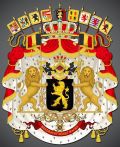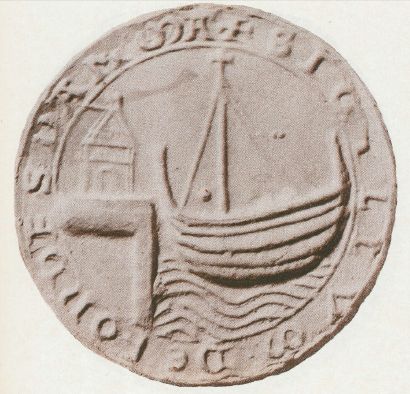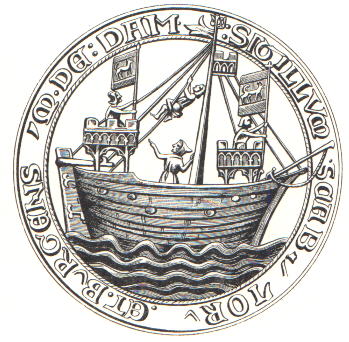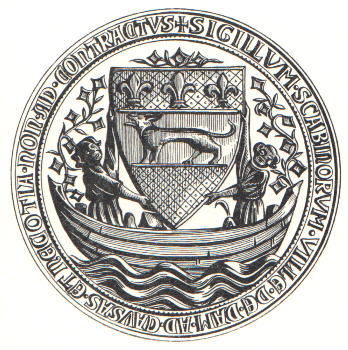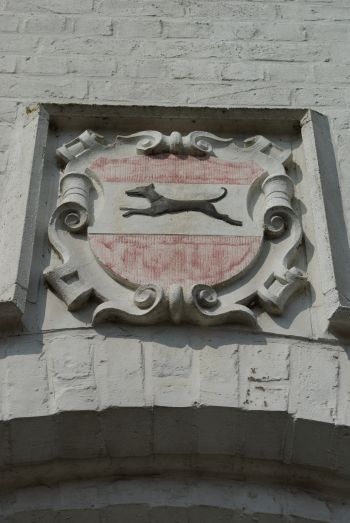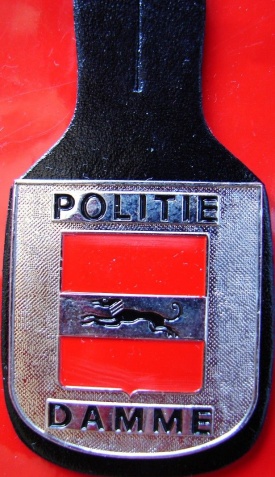Damme
Belgium heraldry portal
This page is part of the Belgium heraldry portal |
Heraldry of the World |
|
Civic heraldry:
|
Other heraldry: |
DAMME
Province : West-Vlaanderen
Additions : 1976 Moerkerke (1970 Hoeke, Lapscheure), Oostkerke, Sijsele
Official blazon
Origin/meaning
The arms were officially granted on February 2, 1838 and again on March 13, 1981.
Damme, or Hondsdamme, received city rights in 1180 by Filips of the Alsace, Count of Vlaanderen. The oldest seal of the city shows a ship, probably a Hanseatic kogge. The contra-seal already shows a dog on a bridge with water in the base. The second seal, from around 1300, shows a ship with a flag or banner with the dog. Later selas show either a ship with a banner, or the arms with a dog on a bar. On one seal the chief of the arms shows three fleur-de-lys, probably for the Count of Vlaaderen at the time.
| Seal of Damme from the first half of the 13th century |
Seal of Damme from around 1300 |
| Seal of Damme from the second half of the 14th century |
The dog on the silver bar is probably a canting element for the old name, Hondsdamme, hond being Dutch for dog. The name, however, means a dam in/near the Honte river and has nothing to do with dogs.
Ever since the 14th century the arms have remained the same; the colours are known since the late 15th century.
| The arms in the Koffie Hag/Café Hag albums +/- 1930 |
The arms as seen in the city |
| The arms on a police badge (source) |
Contact and Support
Partners:
Your logo here ?
Contact us
© since 1995, Heraldry of the World, Ralf Hartemink 
Index of the site
Literature : Servais, 1955; Ewe, 1972
